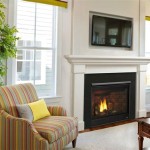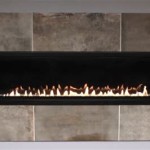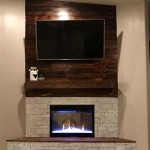Elevating Fireplace Design with Marble and Shiplap
The fireplace, traditionally a focal point of the home, continues to evolve in design and material application. Combining the timeless elegance of marble with the modern farmhouse appeal of shiplap offers a compelling aesthetic that blends sophistication with rustic charm. This article explores the unique characteristics of these materials and how their integration can enhance the visual impact and overall ambiance of a living space.
The Allure of Marble
Marble, a metamorphic rock renowned for its distinctive veining and polished surface, has long been associated with luxury and sophistication. Its durability makes it a practical choice for fireplace surrounds, hearths, and mantels. The inherent variations in color and pattern ensure that each installation is unique, adding a touch of personalized artistry to the design. The reflective quality of polished marble also contributes to increased light diffusion, brightening the surrounding area and creating a more inviting atmosphere.
Several types of marble are commonly used in fireplace design. Carrara marble, with its characteristic white background and grey veins, offers a classic and versatile option. Calacatta marble, distinguished by bolder, more dramatic veining and a brighter white background, provides a more opulent aesthetic. Other variations, such as Crema Marfil with its warm beige tones, and Nero Marquina with its striking black background and white veins, expand the design possibilities to suit diverse preferences. The selection of a specific marble should consider the overall color palette of the room and the desired level of visual impact.
Beyond its aesthetic appeal, marble offers practical benefits for fireplace applications. It is naturally heat-resistant, making it suitable for use close to the firebox. Its non-porous surface is also easy to clean and maintain, resistant to staining when properly sealed. However, it is important to note that marble can be susceptible to etching from acidic substances, so care should be taken to avoid exposing it to harsh cleaning agents.
The Rustic Charm of Shiplap
Shiplap, originally used as exterior siding for ships and buildings, has gained immense popularity in interior design due to its clean lines and distinctive horizontal grooves. Typically made of wood, shiplap provides a textural element that complements the smooth surface of marble, creating a visually appealing contrast. Its versatility allows for application in various styles, from modern farmhouse to coastal chic.
Shiplap can be used in several ways to enhance a fireplace design. It can serve as a backdrop for the marble surround, creating a feature wall that draws attention to the fireplace. The horizontal lines of the shiplap can visually widen a room, while vertical applications can add height. Painting the shiplap in a complementary color can further accentuate the marble surround and integrate the fireplace seamlessly into the overall design scheme.
While traditionally made of wood, shiplap is now available in various materials, including MDF (Medium-Density Fiberboard) and PVC. MDF offers a more affordable alternative to wood while providing a smooth surface for painting. PVC shiplap is moisture-resistant, making it suitable for bathrooms and other high-humidity environments. The choice of material should consider the budget, desired aesthetic, and potential exposure to moisture.
Integrating Marble and Shiplap for a Cohesive Design
The successful integration of marble and shiplap requires careful consideration of scale, proportion, and color palette. The dimensions of the marble surround should be appropriately proportioned to the size of the fireplace and the room. The spacing and width of the shiplap planks should also be carefully considered to achieve the desired visual effect.
Color is a critical element in creating a cohesive design. A common approach is to use white or off-white shiplap to complement the clean lines of marble. However, bolder color choices can also be effective. For example, painting the shiplap in a soft grey or blue can create a subtle contrast with white marble, while dark colors can add drama and sophistication. The chosen color should harmonize with the existing decor and contribute to the overall mood of the space.
The placement of the shiplap relative to the marble also influences the overall design. Shiplap can be installed above, below, or on either side of the marble surround. Using shiplap as a full wall treatment behind the fireplace creates a dramatic focal point. Alternatively, using shiplap only on the lower portion of the wall can provide a more subtle accent. The selection of lighting fixtures can also enhance the design. Recessed lighting can highlight the texture of shiplap, while sconces can add warmth and ambiance.
Consideration should also be given to the style of the mantel. A rustic wooden mantel can complement the texture of shiplap, while a sleek marble mantel can enhance the elegance of the marble surround. The choice of mantel should align with the overall design aesthetic and contribute to the balance and harmony of the fireplace.

Shiplap With Marble Pejs

Marble Fireplace On Shiplap Wall Design Ideas

Modern Slab Marble Shiplap Fireplace Basement Chicago By Morgan Homes Houzz

Carrera Marble Hearth Custom Tile Surround 42 Isokern Vent Free Natural Gas Fireplace Shiplap Accent Wall Sleek Mantel Ideas

Tv On Shiplap Fireplace Wall Transitional Bedroom

Marble Fireplace On Shiplap Wall Design Ideas

Shiplap And Marble Fireplace Farmhouse Living Room

Custom Ship Lap Fireplace Wall With Cabinets Asdwoodworks

Shiplap And Marble Tile Fireplace Surrounds Remodel Tiled Wall

Front Living Room Fireplace Makeover Planning Liz Marie Blog
Related Posts








